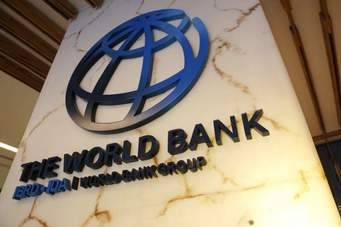Introduction The World Bank has projected that nearly 50 million people in West and Central Africa, including Ghana, will face food insecurity during the 2025 lean season from June to August. This alarming forecast underscores the region's ongoing struggle with food access, primarily driven by conflict, climate change, economic challenges, and inflation.
The February 2025 Food Security Update by the World Bank highlights the urgent need for coordinated intervention, as the situation in many low-income African nations remains dire. The growing concern is that unless effective measures are taken, the worsening crisis could have devastating long-term consequences for millions of vulnerable people.
Understanding Food Insecurity in West and Central Africa
Food insecurity refers to the lack of reliable access to sufficient and nutritious food necessary for a healthy life. In West and Central Africa, the combination of natural and human-induced factors has exacerbated the situation. According to the Food and Agriculture Organization (FAO), the primary causes of food insecurity in the region include:
- Climate Change and Extreme Weather Events
- Political Instability and Armed Conflicts
- Economic Pressures and Inflation
- Declining Agricultural Production and Trade Disruptions
Climate Change and Its Impact on Agriculture
Rising temperatures, erratic rainfall patterns, and prolonged droughts have significantly affected crop production in Africa. The Sahel region, stretching from Senegal to Chad, has witnessed recurring droughts that have devastated farming communities.
For instance, in Mali, wholesale sorghum prices in January 2025 were reported to be 10-25% higher than the previous year, and millet prices soared by 15-45%. Similarly, in Burkina Faso, the cost of staple grains has increased by as much as 55% due to poor harvests, market disruptions, and rising transportation costs.
According to the African Development Bank, climate-related shocks, such as flooding and desertification, have contributed to declining food production in many areas. The World Bank emphasizes that without investment in climate-resilient agriculture, food insecurity will continue to worsen in the coming years.
Conflict and Displacement: Major Drivers of Food Insecurity
Violence and political instability remain major obstacles to food security in West and Central Africa. The conflicts in Nigeria, Mali, Burkina Faso, and the Central African Republic have forced millions to flee their homes, disrupting food production and market supply chains.
In conflict zones, farmers are often unable to cultivate their lands due to violence, leading to food shortages. Additionally, terrorist groups and armed militias frequently target food storage facilities, markets, and supply routes, further aggravating the crisis. According to the World Food Programme (WFP), over 10 million people in the Lake Chad Basin alone are in urgent need of food assistance due to ongoing conflicts.
Economic Pressures and Rising Food Prices
The World Bank’s report indicates that economic stagnation and inflation are making food increasingly unaffordable for many African households. The global rise in fuel and fertilizer prices has driven up production costs, further pushing food prices beyond the reach of low-income families.
The February 2025 edition of the Agricultural Market Information System (AMIS) Market Monitor reported that international prices for staple crops such as wheat, maize, and rice remain volatile. While global prices for most grains are lower than last year, maize prices have hit a 15-month high due to supply constraints. In many West African nations, reliance on imported food has made them highly vulnerable to price fluctuations.
In Ghana, inflation rates have impacted food accessibility. With the country already struggling with economic challenges, food inflation has reached record highs. Ghana recorded the highest food inflation rate among lower middle-income African countries in 2024, further burdening households that spend a significant portion of their income on food.
Humanitarian Aid and the Funding Gap
Despite the growing need for assistance, humanitarian aid to food security programs has declined. According to the World Bank, while 281 million people worldwide experienced acute food insecurity in 2023, food sector aid dropped by 30% compared to 2022. This decline in funding has weakened efforts to address the crisis, leaving millions without support.
The long-term trend in food assistance funding shows a 56% increase since 2016, but this is still insufficient to meet the rising needs. Experts argue that international donors must increase funding for food security programs, particularly in regions facing extreme poverty and food shortages.
The Role of Governments and Policy Interventions
To address the crisis, African governments and international organizations must implement effective policies and long-term strategies, including:
-
Investing in Climate-Resilient Agriculture
- Developing drought-resistant crops
- Implementing efficient irrigation systems
- Promoting agroforestry to combat desertification
-
Enhancing Local Food Production and Market Access
- Supporting small-scale farmers with subsidies and access to credit
- Reducing trade barriers to facilitate food distribution
- Expanding storage and transportation infrastructure
-
Strengthening Social Safety Nets
- Expanding food assistance programs for vulnerable communities
- Providing school feeding programs to reduce child malnutrition
- Implementing cash transfer programs to support low-income families
-
Conflict Resolution and Peacebuilding Efforts
- Strengthening security in agricultural regions
- Facilitating negotiations and peace agreements to stabilize conflict zones
- Encouraging community-led initiatives for social cohesion
The Global Economic Outlook and Its Impact on Food Security
The World Bank’s latest Global Economic Prospects report (January 2025) warns of prolonged economic stagnation, with global growth expected to remain at 2.7% through 2026. While this suggests some stability, it does not provide the necessary momentum to drive poverty reduction or tackle food insecurity.
Persistent economic challenges—including high inflation, mounting debt, and trade disruptions—continue to worsen food insecurity, particularly in low-income countries. Without coordinated efforts from governments, international organizations, and the private sector, millions will remain vulnerable to hunger and malnutrition.
The projection that nearly 50 million people in West and Central Africa, including Ghana, will face food insecurity in 2025 is a stark reminder of the ongoing crisis in the region. With climate change, conflict, and economic hardships exacerbating the problem, immediate action is needed to prevent a worsening humanitarian disaster.
Governments, donors, and stakeholders must work together to implement policies that enhance food production, improve market access, and provide urgent humanitarian aid. Without sustained efforts, the food insecurity crisis could push millions further into poverty and malnutrition, jeopardizing the future of the region.
The World Bank's warning should serve as a wake-up call for international leaders to prioritize food security in West and Central Africa. The time to act is now, before the crisis spirals further out of control.



